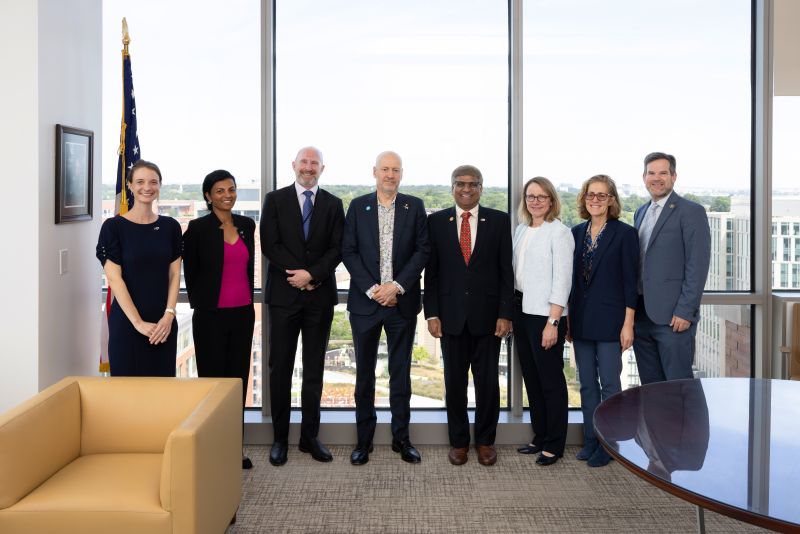This week, NSF Director Sethuraman Panchanathan met with representatives from Australia, including Doug Hilton, CEO of @CSIRO, Dharmini Robertson, U.S. and Canada science counselor at CSIRO, and Geoff Mason, Australian ambassador to the U.S. The group discussed opportunities to advance joint research on various topics, including artificial intelligence, clean energy and critical minerals to benefit both nations. The exchange of ideas with the Australian delegation provided a valuable opportunity to align strategic priorities and explore new avenues for joint initiatives.

In support of the growing need for an AI-ready workforce, NSF announced an investment of nearly $8 million in five innovative projects under the NSF EducateAI initiative. These projects are designed to provide state-of-the-art, inclusive AI education nationwide. By leveraging the resources of the NSF National Artificial Intelligence Research Resource Pilot, these efforts will expand access to AI research and training, particularly for underrepresented groups and institutions across numerous regions. This investment aligns with national priorities and ensures that the next generation is equipped with the skills to navigate and lead in the AI-driven future.
Yesterday, NSF announced an amazing discovery that combines fundamental science and mathematics with cutting-edge engineering to create an entirely new way of seeing inside a living body. With NSF support, @Stanford researchers used common food dye to safely and temporarily render skin and other tissues transparent in mice. From digestion to blood circulation, the invisible was now visible. The implications are profound if proven safe and effective for people, from detecting injuries to detecting cancers. Though several federal and private sources supported this medical breakthrough, it would not have succeeded without the sustained, forward-looking investments of the NSF Faculty Early Career Development Program, NSF EArly-Concept Grants for Exploratory Research, NSF National Nanotechnology Coordinated Infrastructure and NSF Graduate Research Fellowship Program. Learn more about this incredible study in @ScienceMagazine and the NSF news announcement: A window into the body.
This would not have been possible without the hardworking and passionate individuals behind the scenes, whose invaluable efforts and commitment continue to push the boundaries of discovery and innovation. Panchanathan was delighted to celebrate the NSF staff and their achievements yesterday at the NSF Director's Awards, which highlights the talent and dedication that drive the agency's mission forward. Their work exemplifies the core values that are central to the NSF mission.
Together, these initiatives reflect NSF's commitment to fostering groundbreaking research, broadening access to emerging technologies and strengthening global partnerships to tackle today's most pressing challenges.






